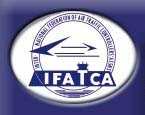Documentary Film Prompts ATC Transfer To Civilian
Authority
 Lightning destroyed the radar at
Argentina's main international airport two months ago, and the
government's slow response is putting passenger safety at risk, say
pilots and air traffic controllers.
Lightning destroyed the radar at
Argentina's main international airport two months ago, and the
government's slow response is putting passenger safety at risk, say
pilots and air traffic controllers.
One pilots' association has reported several near-misses, but a
separate pilots group and government officials are claiming
alarmism, according to Reuters.
"The (defense) ministry... has tried to cover up all the
problems that exist," said Jorge Perez Tamayo, president of
Argentina's Association of Airline Pilots (APLA).
The International Federation of Air Traffic Controllers'
Associations criticized the government last week for its slow
response since the March 1 lightning strike.
"The International Federation of Air Traffic Controllers'
Associations (IFATCA) condemns the Argentinean Authorities'
careless abandonment of accepted international terms of reference
pertaining to levels of safety in aviation," the Canada-based union
said.
"Any decision to delay the repair and return to service of this
essential piece of radar equipment displays a level of disrespect
for air safety in general and for the traveling public in
particular."
Argentina's defense ministry is responsible for air traffic
control and says pilots would refuse to fly to the South American
country if the situation was that risky.
"An international airline, an American airline, wouldn't fly to
Argentina if there was a risk. It would have legal consequences for
the company's managers," ministry spokesman Jorge Bernetti said in
response to frequent criticism by APLA pilots.
Bernetti said the primary radar at Ezeiza, the country's main
international airport, was being repaired and Spain is supposed to
loan a temporary replacement.
Several passengers at Buenos Aires' Jorge Newbery Airport, which
serves domestic flights, have said they were "concerned" by the
reported near-misses.
"It causes a feeling of insecurity and risk, both for Argentine
passengers and foreigners, who aren't used to these things like we
are," said Ana Giese, a Buenos Aires student.
 According to the IFATCA,
"There have been several documented cases of serious losses of
minimum separation between aircraft occurring due to faulty radar
coverage. Both controllers and pilots have refuted statements by
authorities that air safety was assured with the secondary radar
functioning. Both groups have expressed their concerns that
aviation safety in Argentina and surrounding areas has been, and
remains, seriously compromised."
According to the IFATCA,
"There have been several documented cases of serious losses of
minimum separation between aircraft occurring due to faulty radar
coverage. Both controllers and pilots have refuted statements by
authorities that air safety was assured with the secondary radar
functioning. Both groups have expressed their concerns that
aviation safety in Argentina and surrounding areas has been, and
remains, seriously compromised."
Without a primary radar, pilots rely on a more basic secondary
radar system and must wait 10 minutes between take-offs. That, in
addition to recent strikes by airport workers, has meant serious
delays for passengers.
Argentine air safety in general has been under the microscope
due to a 2006 documentary film, "Air Force Ltd" ("Fuerza Aerea
Sociedad Anonima"), exposing air traffic control system flaws
during an upswing in air travel.
The film prompted Argentine President Nestor Kirchner to
transfer air traffic control supervision to a new civilian
authority. Officials blame air traffic control issues on years of
neglect from past governments.
Enrique Pineyro, the film's maker and former pilot, said the
current safety arguments reflect more widespread problems.
"Historically, the policy has been one of denial," he said. "The
foreign airlines believe what the authority tells them. It doesn't
occur to them that the authority lies."
 Unfortunate... ANN/SportPlane Resource Guide Adds To Cautionary Advisories
Unfortunate... ANN/SportPlane Resource Guide Adds To Cautionary Advisories ANN FAQ: Turn On Post Notifications
ANN FAQ: Turn On Post Notifications ANN's Daily Aero-Term (04.29.24): Visual Approach Slope Indicator (VASI)
ANN's Daily Aero-Term (04.29.24): Visual Approach Slope Indicator (VASI) ANN's Daily Aero-Term (04.28.24): Airport Marking Aids
ANN's Daily Aero-Term (04.28.24): Airport Marking Aids ANN's Daily Aero-Linx (04.28.24)
ANN's Daily Aero-Linx (04.28.24)




